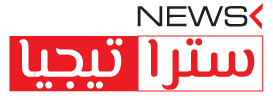What is Donald Trump’s Proposal to End the Russia-Ukraine Conflict?

Department of Research, Strategic Studies and International Relations 19-09-2024
The plan shared by Trump’s running mate appears more aligned with Russia’s perspective than with that of Ukraine or NATO.
The association between Donald Trump and Russia traces back to his initial presidential campaign, during which allegations arose that the Kremlin interfered to support his 2016 victory.
Now, as Trump campaigns for re-election, he has often claimed that he can swiftly resolve the ongoing war between Russia and Ukraine. However, he has yet to present a detailed proposal as the U.S. presidential election approaches.
Recently, JD Vance, Trump’s running mate, offered insights into what a second Trump administration’s approach might look like regarding the war during a podcast interview.
Let’s break down the proposed plan and what it could mean for the parties involved.
Trump’s Stance on Ukraine
Trump has criticized the U.S.’s policy towards Ukraine several times, blaming Democratic leadership for funding and supporting what he calls a protracted, unnecessary war that offers no clear benefits to the United States.
He has claimed the conflict would never have started if he had won the 2020 election and asserted he could end the war “within 24 hours.” So far, no evidence has been provided to back these claims.
During a debate with Vice President Kamala Harris, Trump claimed that if elected in November, he would “get it done before even taking office.” When asked for details, he suggested that revealing specifics would undermine his negotiating position.
“I have a very precise plan to stop the war between Ukraine and Russia,” Trump said in a recent podcast with Lex Fridman. “But I can’t share it, because if I do, it won’t work. Part of the strategy is surprise.”
What Does the Plan Entail?
Although Trump himself has been tight-lipped about the details, JD Vance recently provided more clarity on the strategy.
According to Vance, Trump’s administration would initiate talks with the Kremlin, Ukraine, and European stakeholders to work toward a “peaceful resolution.”
“The most likely scenario is a demilitarized zone along the current lines of control between Russia and Ukraine,” Vance mentioned during the podcast. He added that the zone would be “heavily fortified to prevent further Russian incursions.”
While Vance didn’t elaborate on the exact boundaries of the demilitarized zone, he emphasized that “Ukraine retains its sovereignty, but in return, Russia secures a guarantee that Ukraine will not join NATO or any similar alliance.”
He also noted the high risks involved in U.S. support for Ukraine reclaiming Crimea, which Russia annexed in 2014. “How many American lives would be lost for that? If it’s more than zero, I’m out,” Vance remarked.
Vance is confident that Trump could negotiate a swift settlement, arguing, “They fear him in Russia, and they’re cautious of him in Europe because they know he’s serious.”
He also criticized framing the conflict as a “moral battle between good and evil,” stating that while Russia “should not have invaded,” Ukraine also faces significant corruption issues.
Implications of the Plan
Vance’s outline of a potential peace deal seems far more in line with Moscow’s preferences than those of Ukraine and NATO.
For one, supporting current demarcation lines would force Ukraine to surrender control over territories occupied by Russia.
Since its 2022 invasion, Russia has taken control of several Ukrainian regions, including parts of Luhansk, Donetsk, Kherson, and Zaporizhia. Moscow held referendums in these areas and installed loyal officials.
Russia currently controls roughly 20% of Ukraine’s territory, with any peace deal needing to recognize these “realities on the ground,” according to Moscow.
In contrast, Ukraine maintains that any peace agreement must nullify Russian claims over its territories, including the Crimean Peninsula, and return them to Kyiv’s control.
Additionally, Ukraine is seeking more financial aid, military support, and an expedited membership process with NATO. The alliance has assured Ukraine of a “path to membership.”
Moreover, Kyiv insists on holding Russian leaders accountable by prosecuting them in international tribunals.
What’s Next?
Despite Trump’s campaign rhetoric, the Russia-Ukraine conflict shows no signs of a near-term resolution.
The Kremlin has expressed skepticism regarding Trump’s claims of ending the war quickly, with spokesperson Dmitry Peskov labeling such expectations “fantasy.”
Russian President Vladimir Putin recently mocked Kamala Harris’s campaign, suggesting Moscow “supports” her since she might refrain from imposing additional sanctions on Russia.
Meanwhile, hostilities persist, with both Russian and Ukrainian forces making small advances in contested areas. Russian troops have made incremental gains in eastern Ukraine, while Ukrainian forces continue to push into Russia’s Kursk region.
Despite ongoing international efforts to de-escalate, Russia has resisted withdrawing its military presence, continuing to mobilize for a counteroffensive.





